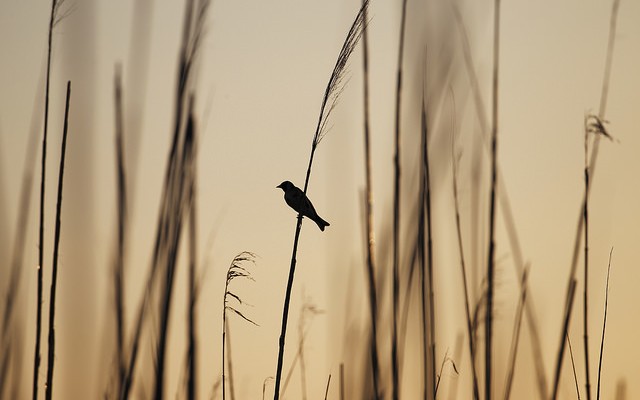It’s early, just after six, and I’m crouching in the field between rows of cherry tomatoes, the plants’ wayward branches brushing against my arms and staining them yellowy green. On the mornings of hot farm days I dress in the dark and load dusty black crates into the boot of my car, then drive through hills and vineyards gilded by the rising sun.
In mid summer it feels like everything in the market garden is at its boldest. Winter’s weeds have died down. There are bursts of colour amongst the green – zinnias, and strawberries, and long curled cayenne peppers. In the half-acre we’ve been farming for three seasons, everything looks healthy and lush. The new patch though, tilled up over winter in preparation for the farm’s expansion, is struggling a bit. I spend hours each week picking the tomatoes and capsicums here, hauling and sorting and packing them. But the plants aren’t as tall as they should be by now, and long swathes of foliage have withered and dried up.
Comparing the soil tests from each of these two patches tells a story of degradation and regeneration. The untouched section of the farm, once used to agist horses, is drastically low in phosphorous, while the part we’ve been cultivating and feeding has high mineral levels and almost double the organic matter. It’s a story Charles Massy has seen play out many times in farms across the country. Soil fertility is central to the research, observations and exhortations that comprise his recent book, Call of the Reed Warbler.
Massy’s book is a deep-thinking call-to-arms for a revolution in Australia’s agricultural system. Massy’s vision for a new agriculture is to move away from industrial inputs and land clearing, and instead raise productivity by encouraging biodiversity and healthy soils. His book is so important (and long, and dense) that I keep the library’s fresh copy for far too long. It’s reported missing, but I’m spurred on to finish it, to reread it and lend it out, so I pay for it, and peel off the barcodes. My friend’s mum bought her a copy, only to flick through it, begin reading and realise she could not give it up. ‘I bought you another one,’ she tells her daughter. ‘It’s too important.’
The vitalness of Massy’s work lies in its honesty, its being at once radical and deeply practical. ‘A new regenerative agriculture is subversive,’ Massy tells us, ‘but in a truly constructive way.’ According to Massy, the subversive farming practices he describes can increase biodiversity and ecosystem resilience. They can build stronger rural communities. They can improve human health. Most remarkable of all, if used widely enough, they can halt climate change.
The power of the solution hints at the scale of the problem. Unthinkably vast tracts of agricultural land in this country are seriously degraded. Like our market garden’s struggling tomatoes on a massive scale, the yields and the health of plants and animals are suffering as a consequence. Massy’s case studies describe deforested pastures that can’t hold the rain, their ancient topsoil sent whooshing in torrents to the road and down the valleys. There are the well-worn tales of farmers taking on more and more debt to try and keep afloat, pouring ever-greater quantities of fertiliser and herbicide on their soil at the behest of hired agri-business consultants.
Reversing this damage is only possible through a new ecological literacy. Call of the Reed Warbler’s recurring refrain is that all natural systems are self-organising; that, as put by several of Massy’s interviewees, farmers and managers need to ‘get out of the way’ and allow nature’s processes to return the land to a state of health. Getting out of the way, in this case, does not mean doing nothing, but rather minimising unnecessary intervention – in the form of soil disturbance, overgrazing and the application of chemicals – and encouraging healthy landscape functions. This is done largely through methods of livestock rotation that imitate natural herd grazing patterns, but also by revegetating land to create wildlife corridors, judiciously directing the flow of water across a landscape, and drawing on organic sources of fertility like compost and animal manures. For the farmers who bravely set off down this path, the results speak for themselves.
Drastically changing our farming methods on the scale of millions of hectares might seem almost impossible – Massy himself tells us from personal experience that it’s hard enough for an individual farmer to admit there might be a better alternative to their lifelong approach. But explicated in the context of Australia’s geological and cultural past, the notion of changing our farming methods becomes an essential one. In the millennia before white invasion, says Massy, the intricate social and spiritual frameworks of Aboriginal peoples gave rise to ‘one of the most sophisticated, widespread and complex land-use systems devised anywhere on Earth.’ Tragically and inevitably, the introduction of European farming methods had a ‘catastrophic impact’ on both people and landscape. Facing this history is part of our agricultural legacy. ‘Until there is true reconciliation and appropriate reparation and acknowledgement of the past injustices,’ Massy says, ‘we modern non-Indigenous Australians won’t be able to belong here; to truly set deep roots and our psychic selves in this ancient country; to truly become structurally coupled with the Australian earth.’
And so this reckoning is an essential part of our role as regenerative farmers, one that goes hand-in-hand with our commitment to the landscapes in which we set our roots.
Massy doesn’t spend much time discussing tiny farms like the one I work on. But each week in the field, I can see that what we do is still an important example of the new agriculture his book describes. I see it in the heaving growth of new transplants in their compost-rich beds, in the proliferation of ladybirds keeping aphids out of the greens, and in the painful contrast between the soil we’ve been feeding and the soil we haven’t. Given the opportunity, natural systems will self-organise.
Massy’s book reminds me of what I sometimes forget in the swirling haze of summer, the long sweaty days of hard work and low pay: Farming is an act of resistance. This, for me and for a lot of young farmers I know, is why we started doing it. The bodily strength, our immersion in the seasons, the exquisite exhaustion, the most delicious and nourishing food we’ve ever eaten – these are happy side effects that keep us going. But in the beginning and in the end, we farm to heal; to help solve the world’s problems in the quiet and honest way we think we can.
Image: Reed Warber / Ed Dunens







